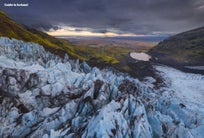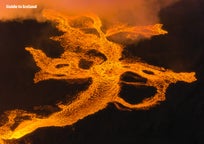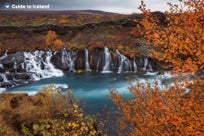
Vad ska jag ha på mig på Island? Den ultimata guiden för alla årstider

- Vikten av lager på lager
- Baslager
- Mellanlager
- Ytterlager
- Det här ska du ha på dig på våren på Island
- Väder under våren (april-maj)
- Vilka kläder ska man packa för Island på våren?
- Vilka kläder ska man packa för Island på sommaren?
- Väder på sommaren (juni till augusti)
- Det här ska du packa för Island på sommaren
- Det här ska du ha på dig på Island på hösten
- Väder under hösten (september till oktober)
- Det här ska du packa för Island på hösten
- Det här ska du ha på dig på vintern på Island
- Vädret på vintern (november till mars)
- Det här ska du packa för Island på vintern
- Det här badkläderna behöver du på Island
- Det här ska du inte ha på dig när du reser runt på Island
- Det här ska du ha på dig i stan'
- Dresscode på Island
- Klädshopping på Island

Island är ökänt för sitt ständigt skiftande väder med milda vintrar samt ganska svala och blåsiga somrar. Att packa för ett land med vädergudar som har humörsvängningar kan verka krångligt, men oroa dig inte - vi hjälper dig!
Solig himmel, plötsliga skurar, hårda vindar och överraskande snöfall. Det här är inte en beskrivning av de fyra årstiderna, utan det skiftande vädret under en dag på Island. Men du behöver inte bli stressad om du förbereder dig ordentligt.
Du behöver vara beredd på alla väder när du njuter av norrskenets sken på norrskensresor, solskenet på sommarresor eller trotsar kylan på vinterresor. Denna ultimata guide kommer att ge dig all information du behöver för att hålla dig varm när du besöker Island när som helst på året.
Även om vädret verkligen är oförutsägbart finns det flera fördelar med en resa till Island, särskilt om du planerar en road trip i hyrbil på den berömda Ringvägen. Med relativt milda vintrar och svala somrar är temperaturvariationen på Island inte riktigt så hög som du förväntar dig. Naturligtvis kan du behöva göra vissa klädjusteringar beroende på när du bestämmer dig för att besöka Island, men det finns också vissa basplagg som alltid funkar.
Vikten av lager på lager
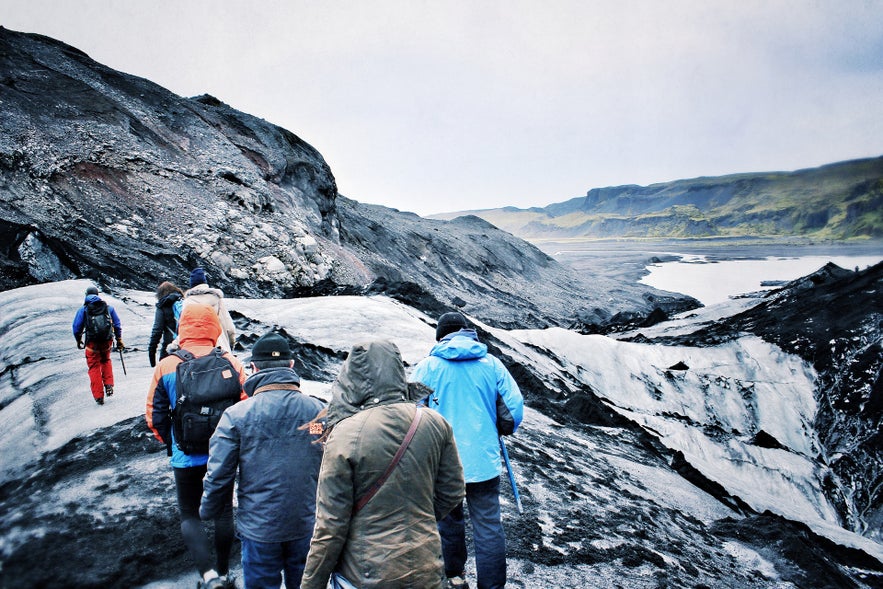
Oavsett årstid är det viktigt att tänka på lager på lager när man förbereder sig för en resa till Island. Denna klädstrategi innebär att varje lager har en specifik funktion, och att hela klädpackningen arbetar för att ge komfort och skydd i många olika väderförhållanden. Det låter ganska praktiskt på en plats som Island, eller hur?
Oavsett om du har tänkt på det eller inte, har du burit kläder i lager på lager förut. Att bära flera lager kläder är viktigt på Island för att kunna hantera det oförutsägbara vädret och vildmarken, så låt oss snabbt gå igenom varje lager i rätt ordning:
Baslager
Detta lager kommer är närmst huden och består av underkläder, långärmade toppar eller t-shirts och strumpor. Dess främsta funktion är att hantera fukt och transportera bort svett från kroppen så att du håller dig torr. Detta hjälper till att reglera kroppstemperaturen och förhindrar att du kyls ned för snabbt under kallare förhållanden. Syntetiska tyger eller ull är bra val, men undvik bomull eftersom det absorberar fukt och kan få dig att känna dig kall och blöt.
Mellanlager
Mellanlagrets primära funktion är att isolera och hålla kvar kroppsvärmen för att hålla dig varm. Det fångar upp luft nära kroppen, som värms upp av kroppsvärmen, för att skapa en barriär mot kylan. Ett bra mellanlager kan vara en fleecejacka, en softshelljacka eller en ulltröja. På vintern kan det också vara en bra idé att ha tjockare strumpor utanpå underställsstrumporna.
Ytterlager
Det yttre lagret, eller skallagret, är ditt skydd mot väder och vind som vind, regn eller snö. I detta lager ingår hard shell-jackor och vattentäta byxor. Detta lager ska vara antingen vattenavvisande eller vattentätt och ofta även vindtätt. De bästa ytterlagren andas också, vilket gör att svett kan transporteras bort så att du inte känner dig fuktig.
Det här ska du ha på dig på våren på Island
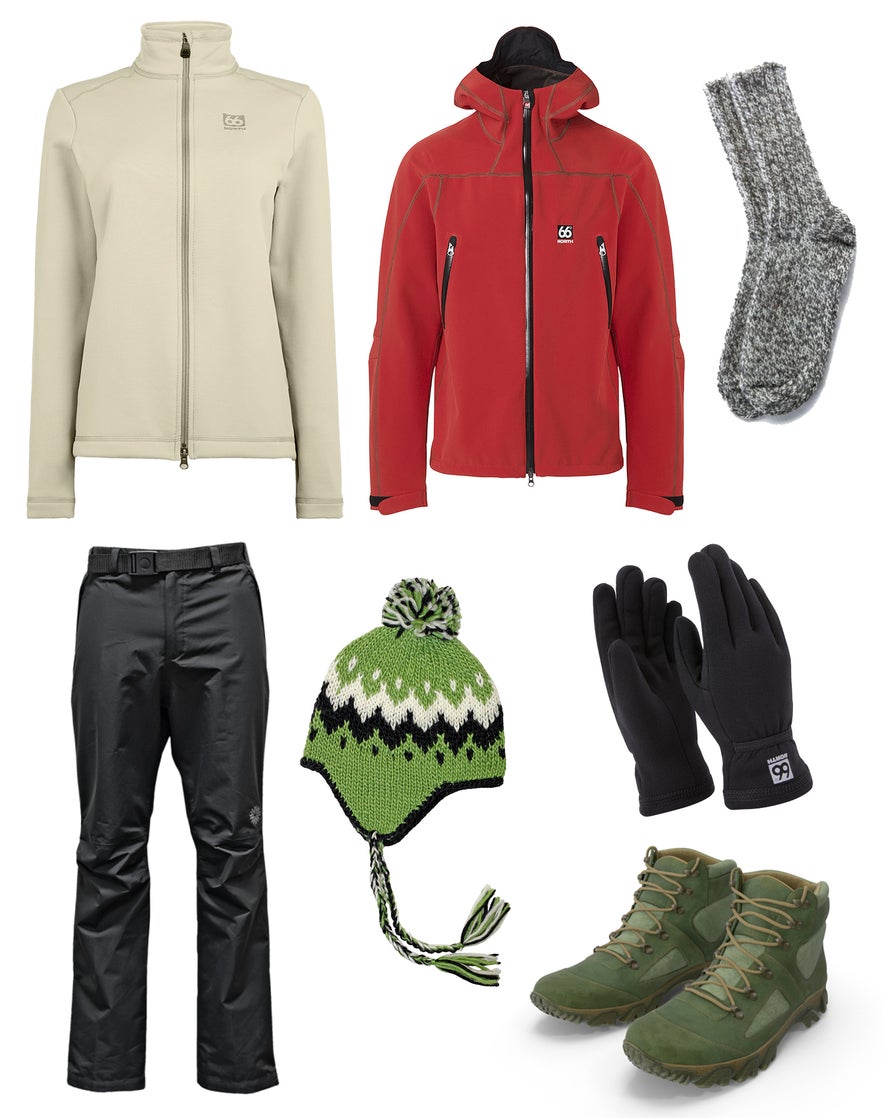
Även om det fortfarande är kyligt börjar våren på Island att föra med sig mildare väder. Milt enligt isländsk standard, i alla fall. Dagarna blir allt längre och vissa flyttfågelarter återvänder till de isländska kusterna.
Väder under våren (april-maj)
Medeltemperaturen under våren på Island varierar i allmänhet från cirka 0°C till 7°C i april till upp till 4°C och 10°C i maj. Du kan förvänta dig blåsiga förhållanden, särskilt i kustområden och på höglandet.
Regn är ganska vanligt i april och maj, även om det vanligtvis är lättare än andra månader. Även om det är ovanligt är snöfall förekommande under våren på Island.
Vilka kläder ska man packa för Island på våren?
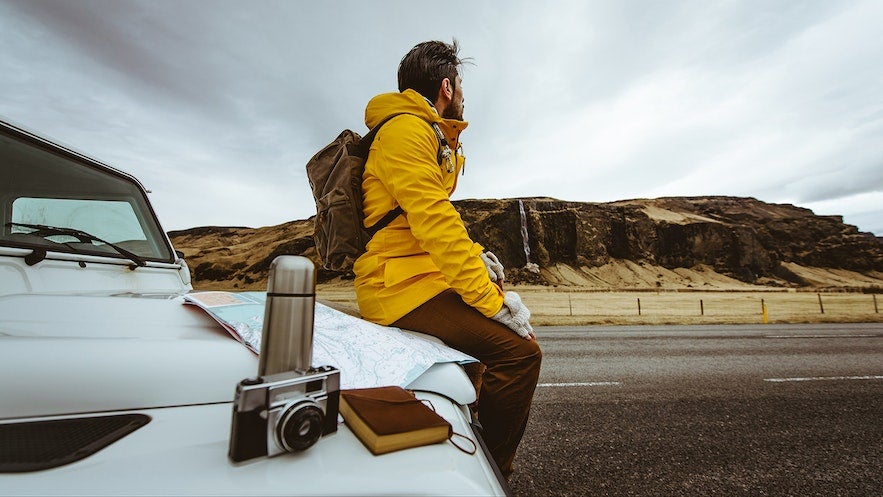
När du packar för Island på våren bör du hoppas på det bästa men vara beredd på det värsta. Även om vädret i allmänhet är mildare bör du packa som om du kommer att stöta på en hel del vind, regn och eventuellt snö.
Förbered dig på att möta både kallare och varmare väder, och det är därför viktigt att ha ett bra värmelager. Som mellan- och skalplagg rekommenderar vi fleecetröjor och en vindjacka. Att ta med shorts och några T-shirts är en bra idé om det blir varmt.
Ett par vandringskängor eller ett par rejäla promenadskor är nödvändiga för ojämn terräng och för att skydda fötterna mot väder och vind. Du bör också ta med dig en varm mössa, tjocka handskar och en halsduk för att skydda dina vitala delar från eventuell kyla.
Kom ihåg att det är bättre att packa ner för lite än för mycket. Det fina med lagersystemet är att du kan lägga till eller ta bort lager efter behov.
Vilka kläder ska man packa för Island på sommaren?
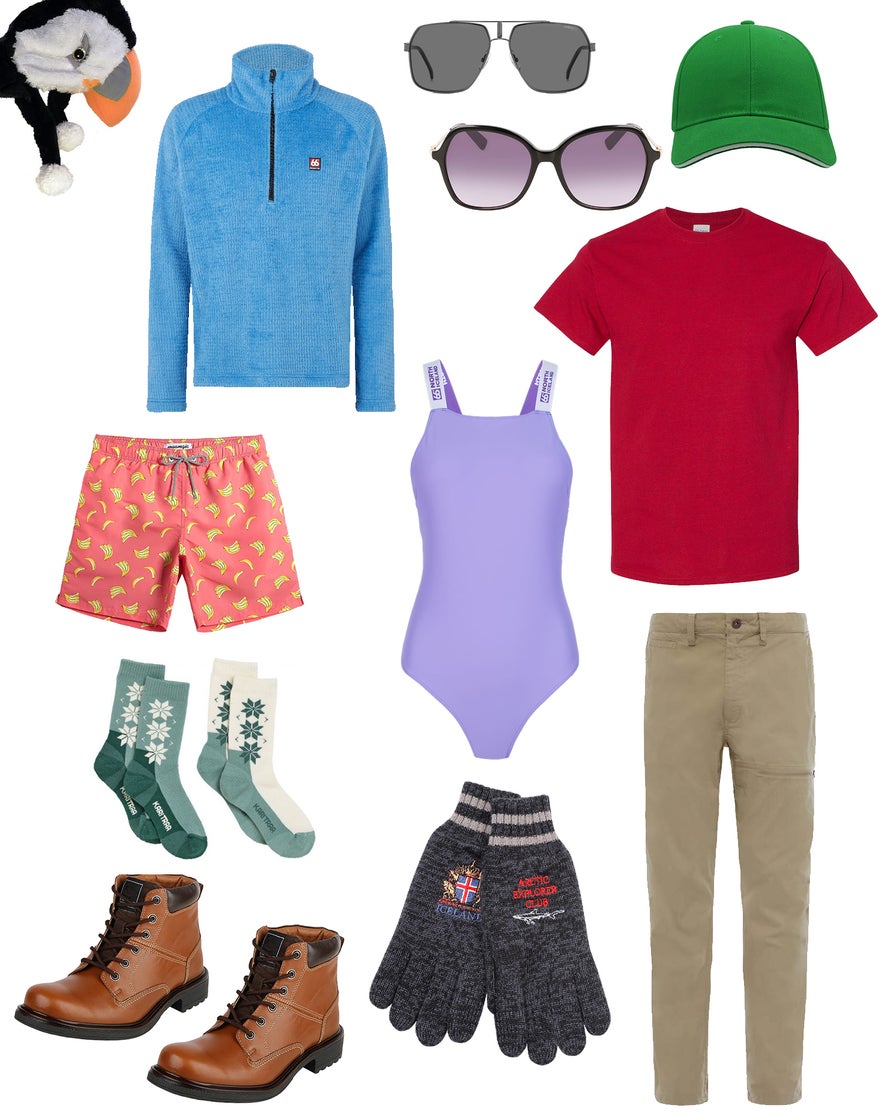
Sommaren är den mest hektiska säsongen för turism på Island, eftersom många människor strömmar till landet för att njuta av det varmare vädret och nyttja de långa dagarna under midnattssolen.
Väder på sommaren (juni till augusti)
Det är inte förvånande att sommaren är Islands varmaste årstid. Medeltemperaturen under dessa månader ligger vanligtvis mellan 9°C och 15°C, med det varmaste vädret i juli. Varmare dagar är inte ovanliga, ibland över 20°C (68°F), ibland betydligt högre.
Regn är ganska vanligt på sommaren, men skurarna är vanligtvis lätta och går snabbt över. Även om det alltid blåser på Island är vindarna i allmänhet svagare på sommaren än under andra årstider.
Det här ska du packa för Island på sommaren
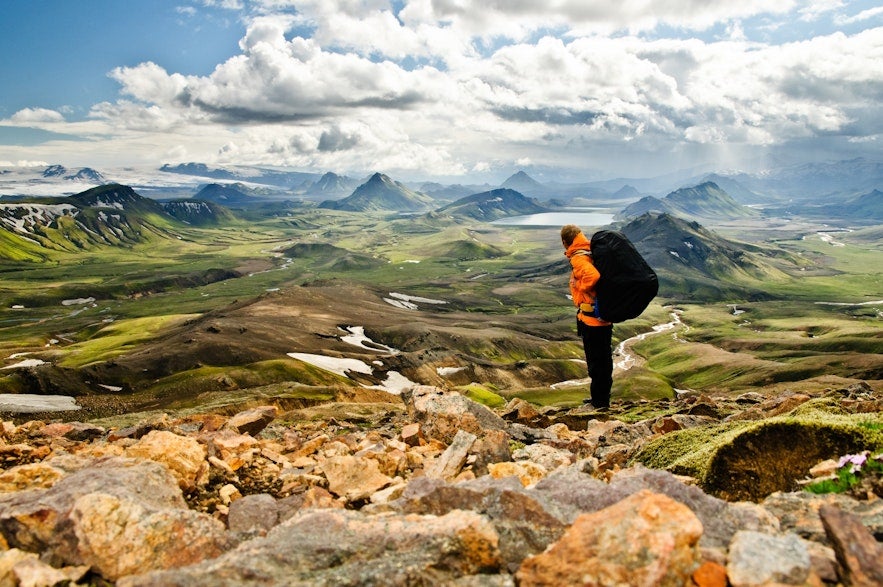
Även om sommaren på Island är varmare än de andra årstiderna ska du inte komma inrusande i dina Crocs och förvänta dig ett tropiskt paradis - det kommer fortfarande att vara ganska svalt jämfört med de flesta sommardestinationer.
Packa ett rejält baslager för att hålla dig torr, med en blandning av kort- och långärmade skjortor beroende på vädret. Packa ner några linnen om du vågar ta chansen. Återigen, ett bra mellanlager för isolering, till exempel en fleece- eller ulltröja, kommer att fungera utmärkt. Ett vatten- och vindtätt ytterlager är viktigt om du ska ut i vildmarken. Ta gärna av dig några av lagren om du känner dig för varmt klädd på en varm dag.
Du bör också packa lite lättare kläder för de varmare dagarna, särskilt om du planerar att tillbringa några dagar i staden. Shorts, sommarklänningar och lediga skor gör det mycket roligare att traska runt i staden en solig dag än att ha på sig tung vandringsutrustning. Solglasögon och en sovmask för det eviga dagsljuset kommer väl till pass.
Det här ska du ha på dig på Island på hösten
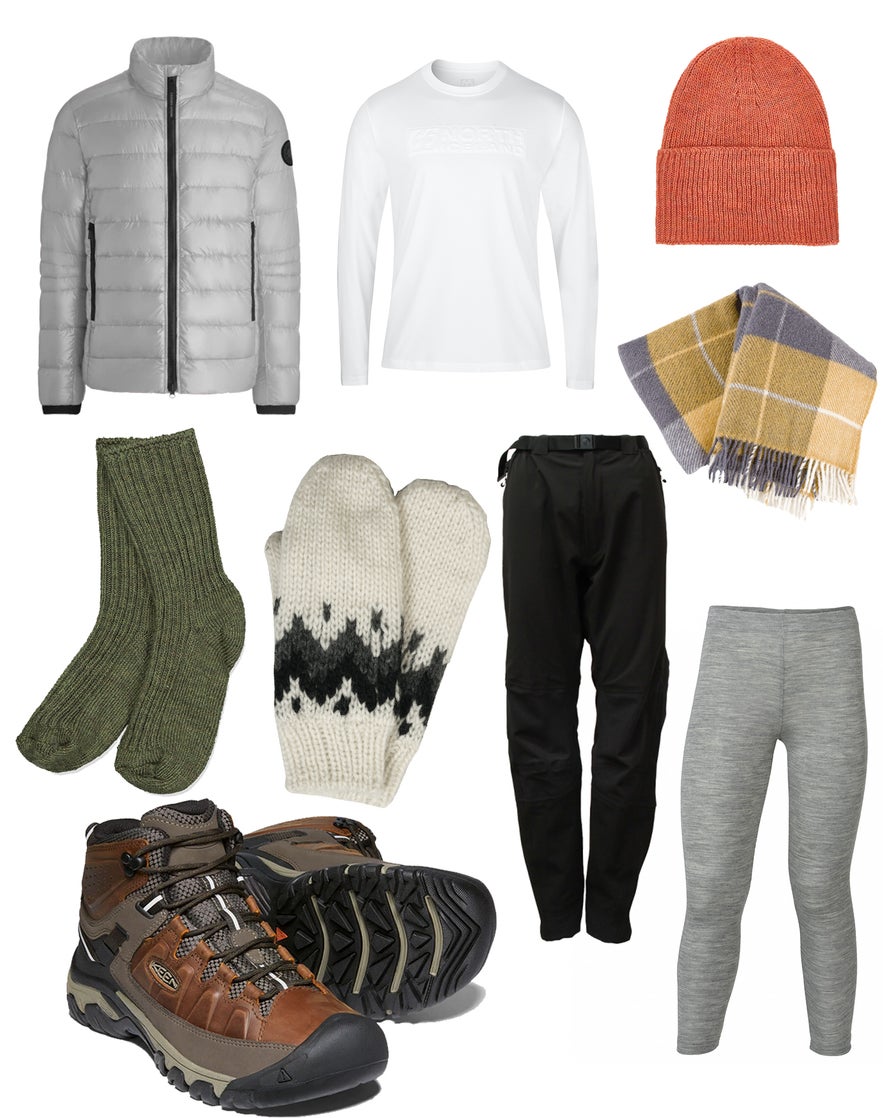
När hösten är här blir dagarna på Island kortare och höstfärgerna smyckar landskapet. Hösten är en utmärkt årstid för besökare som hoppas på att få se norrsken och för dem som vill få ordentlig nytta av sina regnrockar.
Väder under hösten (september till oktober)
När det blir kallare under hösten kan du förvänta dig en medeltemperatur på omkring 7°C till 13°C i september, som sjunker till omkring 2°C till 7°C i oktober. Dessa temperaturer kan variera en hel del, och kallare förhållanden är vanliga. Vindarna börjar bli starkare under höstmånaderna, och du kan förvänta dig regn och eventuellt snö. Om du reser till norra Island eller till Höglandet bör du överväga innehållet i packningen lite extra.
Det här ska du packa för Island på hösten
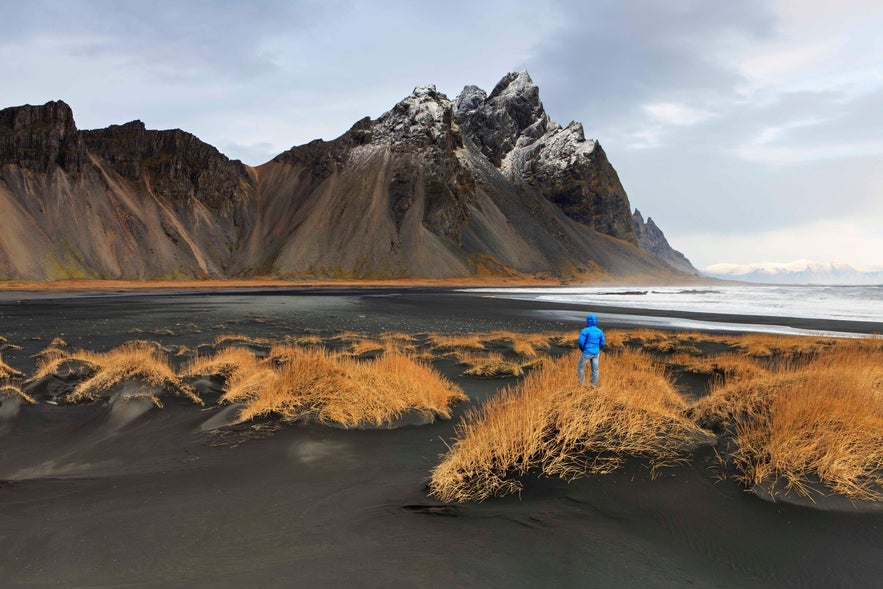
Packa även nu ett termiskt underställ som håller dig torr och ett rejält mellanlager som håller dig varm, t.ex. en varm tröja eller fleece. En vindjacka eller regnjacka som ytterlager är viktigt för att vara förberedd på plötsliga regnskurar eller vindbyar under hösten. Att ta med regnbyxor och ett regnskydd för ryggsäcken är en bra idé.
Nu kanske du tänker att ett paraply skulle vara en livräddare i höstregnen, men verkligheten är att de starka vindarna gör att det går sönder. Vi rekommenderar att du istället satsar på ett vattentätt ytterlager. Mössor, handskar och en varm mössa är också nödvändiga för att skydda mot kyla, men se till att de inte absorberar för mycket fukt.
Det här ska du ha på dig på vintern på Island
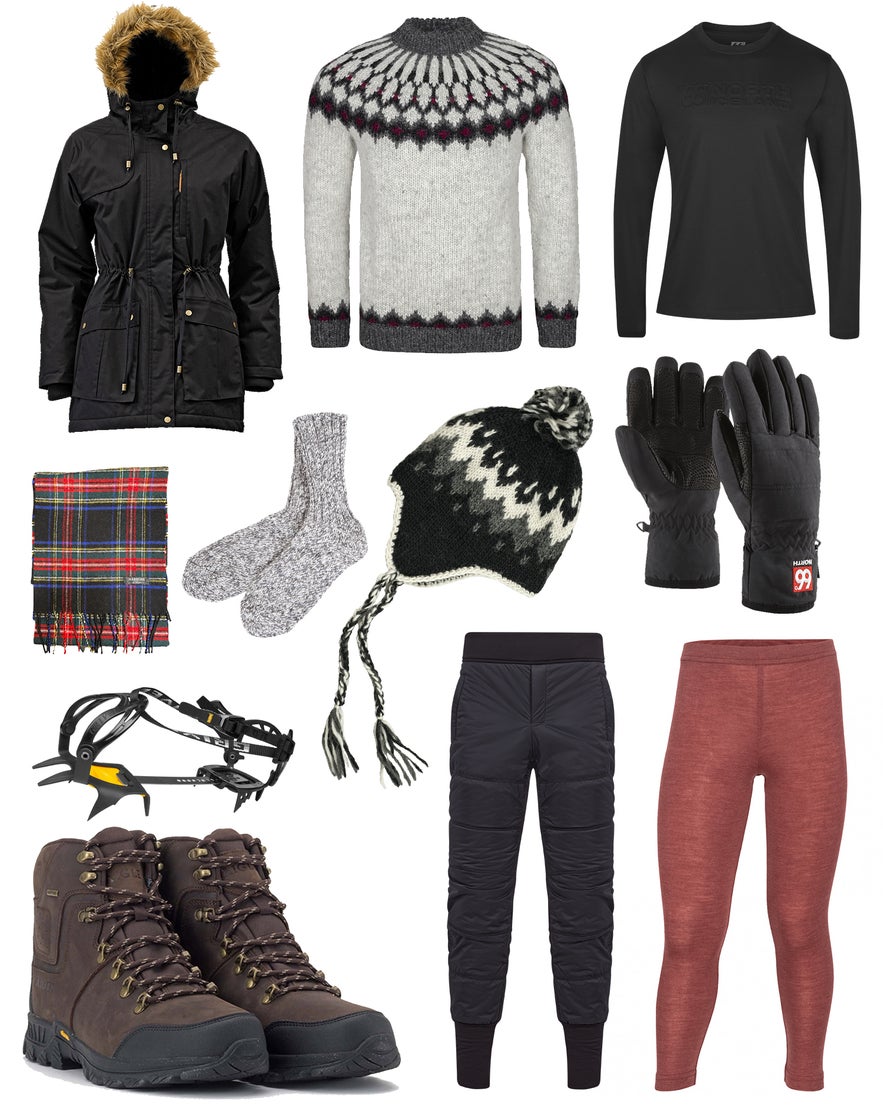
Vintern är en perfekt tid för att se norrsken och är naturligtvis den kallaste årstiden på Island. Även om klimatet kan vara tufft, belönas väl förberedda resenärer med vackra, snöiga landskap.
Vädret på vintern (november till mars)
Vintern på Island är Islands längsta och kallaste årstid och kännetecknas av kalla temperaturer, som ofta kan sjunka under nollstrecket. I november varierar medeltemperaturen från -1°C till 4°C och sjunker till -5°C till 2°C i december.
Januari och februari är Islands kallaste månader, med medeltemperaturer på mellan -10°C och 3°C. Det börjar bli lite varmare i mars, med temperaturer från -2°C (28°F) till 3°C (37°F).
Snöfall är vanligt på vintern, särskilt i de norra och östra delarna av landet, liksom på Höglandet som förblir otillgängligt under säsongen. Is är vanligt på vägar och gångstigar. Stormar med kraftiga vindar kan förekomma, och vindkylan gör att temperaturen känns ännu kallare än den är.
Det här ska du packa för Island på vintern
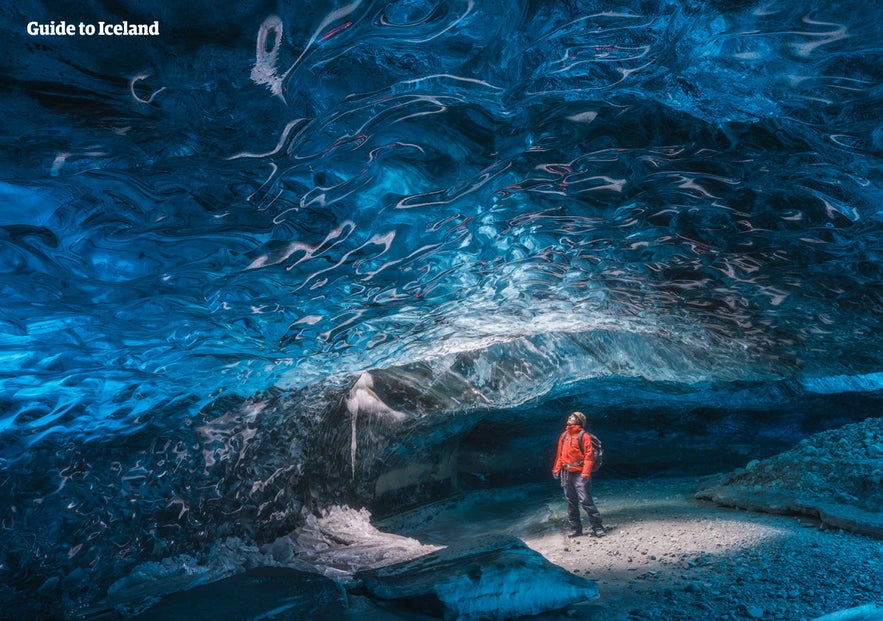
När du packar för en vinterresa till Island kan du behöva förbereda dig för att vistas i minusgrader under längre perioder. Se till att välja ett fukttransporterande baslager, till exempel underkläder i ull. Långkalsonger är det bästa valet av underställ.
Lägg till ett isolerande mellanlager som fleece eller ull, och ta med tjockare strumpor att dra på över dina vanliga strumpor för att bibehålla värmen i fötterna. När du ska välja ytterplagg rekommenderar vi en tjock, isolerande parkas eller dunjacka. Vattentäta eller vindtäta byxor gör hela skillnaden. Om du väljer ett lättare ytterplagg, se till att ditt mellanlager är rejält.
Isolerade, vattentäta vandringskängor är ett måste, och se till att de har ett bra grepp för isiga förhållanden. Om de inte har det, packa ner stegjärn. Glöm inte heller en varm mössa, tjocka, isolerade handskar eller vantar och en halsduk för att skydda mot vinden.
Se mer: Island på vintern - Den ultimata reseguiden
Det här badkläderna behöver du på Island
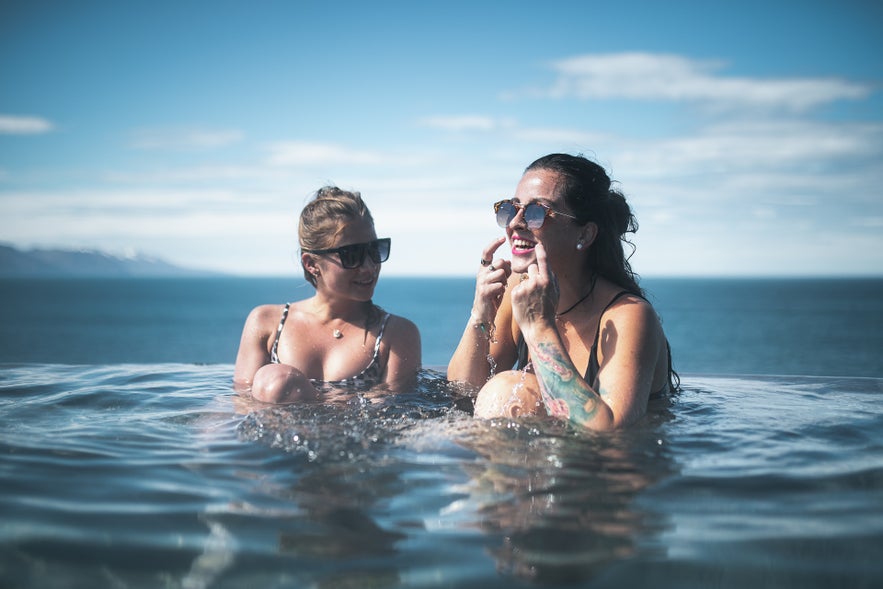
Oavsett årstid är det ett absolut måste att packa badkläder för att kunna besöka Islands många varma källor och geotermiska pooler. Välj de badkläder som du känner dig mest bekväm i, oavsett om det är en traditionell baddräkt , en bikini eller badbyxor.
Du behöver inte flip-flops eller vattentäta sandaler i Islands pooler eller varma källor, men du kan ta med dem om de gör att du känner dig mer bekväm. En snabbtorkande handduk är praktiskt vid poolkanten, särskilt på vintern när temperaturen är iskall.
Om du inte tar med dig badkläder eller handduk erbjuder många anläggningar uthyrningsalternativ, men dessa kommer troligen inte att vara lika bekväma eller snygga som de du har hemma. Du kan strunta i badkläder på vissa ställen, men se till att det anses vara OK att bada naken där.
Det här ska du inte ha på dig när du reser runt på Island
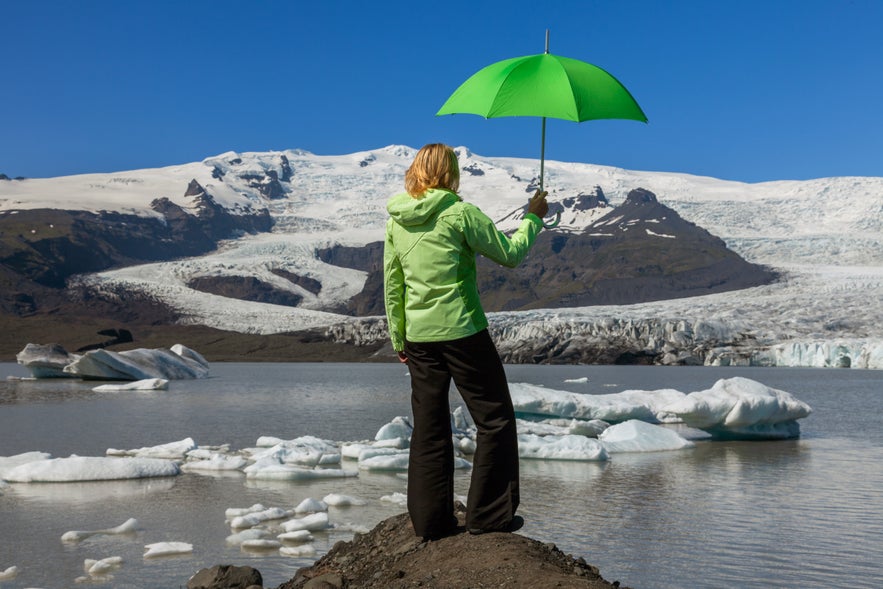
Nu när vi har gått igenom vad du ska ha på dig på Island, är det dags att lista vad du absolut inte behöver ha med dig
Ytterkläder i denim eller bomull: Även om dessa material kan vara lämpliga i torra förhållanden, absorberar de vatten och får dig att känna dig kall och fuktig i vått väder. Välj istället vattentäta eller snabbtorkande material. När du bor i en stad är dessa dock helt okej.
Hala eller obekväma skor: Terrängen på Island kan vara utmanande, så det är viktigt att bära rejäla skor med bra grepp för att förhindra halka och ordentligt fotledsstöd för dina fötter under långa promenader eller vandringar.
Höga klackar eller sandaletter: Såvida du inte planerar att spendera mycket tid i formella miljöer, är höga klackar och klänningsskor opraktiska för Islands landskap och väder och otroligt opraktiska när du vandrar på de isländska glaciärerna!
Paraplyer: Islands vind kan göra det svårare att använda ett paraply än det är värt. Satsa på vattentäta jackor och hattar istället för regnskydd.
Det här ska du ha på dig i stan'

Även om du inte kommer att slippa det ombytliga vädret när du befinner dig inom stadens gränser, tenderar spelreglerna när det kommer till vad du ska ha på dig att vara lite mer avslappnade. No-no's i vildmarken som jeans eller bomullströjor är plötsligt kutym och sneakers är helt OK när gatorna inte är isiga.
Ytterkläderna som beskrivs i guiden ovan är helt lämpliga för att utforska städerna på Island, men att bära en färgglad vindjacka kommer att få dig att sticka ut som turist. För att smälta in bland lokalbefolkningen kan du överväga att byta till en snygg jacka eller kappa.
När man går ut på kvällarna kan Island bli ganska kallt. Oavsett hur formellt eventet är bör du tänka på att hålla dig varm, eftersom du kan behöva gå runt eller vänta i kylan ett tag, beroende på vad du gör. Många anläggningar har klädhängare eller kapprum, så du slipper släpa runt din parkas på dansgolvet.
Dresscode på Island

När det gäller klubbar och barer har de flesta av dem inga regler när det kommer till kläder. Vissa exklusiva barer och klubbar i Reykjavik förväntar sig att du är mer uppklädd, särskilt på helgerna, men generellt är Islands nattliv avslappnat jämfört med många andra länder.
Den allmänna regeln för de få klubbarna med klädkoder är inga huvtröjor, tröjor eller träningsbyxor, vandringskläder, sportiga t-shirts eller gympaskor.
Som en tumregel, om du är tveksam, är det alltid säkrare att luta sig mot en uppklädd men ledig look än att satsa på cocktailklänning och kavaj. Ett par jeans med topp eller skjorta fungerar fint i de flesta situationer. Om du vill ha en snygg kavaj, kan du ha den under kappan/rocken när vädret är kallt.
Klädshopping på Island
 Oavsett om du har glömt att packa ner viktiga kläder inför Islandsresan eller vill köpa en av Islands klassiska ulltröjor finns det många shoppingmöjligheter här.
Oavsett om du har glömt att packa ner viktiga kläder inför Islandsresan eller vill köpa en av Islands klassiska ulltröjor finns det många shoppingmöjligheter här.
Laugavegur är den största shoppinggatan i Reykjavik. Den har massor av klädbutiker, oavsett om du behöver exklusiv vandringsutrustning, begagnade prylar eller en snygg klänning för kvällen. Om du bor i centrum är detta förmodligen det bästa alternativet, och var inte rädd för att utforska sidogatorna.
Kringlan och Smaralind är de största köpcentrumen i Reykjavik-området, med flera större klädbutiker (och massor av restauranger för att hålla dig pigg på shoppingrundan).
Kolaportid loppmarknad är ett bra ställe att hitta unika föremål som du inte hittar i butiker. Endast öppet under helgerna. Tänk på att de flesta av säljarna på Kolaportid föredrar att få betalt med kontanter, medan ett fåtal accepterar kort.
Du har nu nått till slutet av guiden med rekommendationer om vad du ska ha på dig på Island! Har vi missat någon viktig information? Har du några klädrelaterade äventyrsberättelser från din tid på Island? Berätta mer i kommentarerna nedan!
Other interesting articles

Den ultimata guiden till Gyllene cirkeln på Island
Ta reda på allt du behöver veta om Islands fantastiska Gyllene cirkel. Upptäck häftig natur, aktiva gejsrar, dånande vattenfall och djupa sprickor mellan två kontinentalplattor. Gyllene cirkeln är...Läs mer
Island på sommaren - den ultimata reseguiden
Sommaren är en fantastisk tid att upptäcka Island och dess underverk utan begränsningar. Dra nytta av det längre dagsljuset för att utforska de vackra landskapen på det isländska höglandet. Möt det is...Läs mer
Island på våren - den ultimata reseguiden
Island är ett land med otroligt vacker natur, och våren är en av de bästa tiderna att uppleva den. Upplev allt från norrsken till fågelliv. Våren på Island är en årstid som sjuder av liv, vilket gör...Läs mer

Ladda ner Islands största resemarknad till din telefon och hantera hela resan på ett och samma ställe
Skanna QR-koden med telefonkameran och tryck på länken som visas så får du tillgång till Islands största resemarknad. Ange ditt telefonnummer eller din e-postadress om du vill få ett SMS eller e-postmeddelande med nedladdningslänken.


